WestCoastChestnut
Tissue Culture Bouche de Betizac Chestnut Trees
Tissue Culture Bouche de Betizac Chestnut Trees
Couldn't load pickup availability
Tissue culture Bouche de Betizac Chestnut trees grown to ~30 inches tall and shipped bare root. The trees will be packed for safe shipping and should be removed from the bag and heeled upon arrival and then watered until ready to plant.
The photos are of the trees in the various stages of propagation & growth. Orders can be fulfilled as bare root plants in the winter (most common) or as liners to nursery customers in the spring.
About the Bouche de Betizac Cultivar
The Bouche de Betizac chestnut is a hybrid chestnut cultivar that is known for its large nuts, good flavor, and resistance to chestnut blight. It is a cross between the European chestnut and the Japanese chestnut (Castanea sativa x crenata), and it was developed in France in the 1960s.
As a result of genetic fingerprinting our trees as well as digging up chestnut genetic research done years ago my researchers in the Midwest, it's clear that there are likely a range of genetically diverse trees that go by the name "Bouche de Betizac." Therefore, we cannot guarantee that these trees are genetically identical to those commonly referred to as Bouche de Betizac in various parts of the U.S. You can read more about these discoveries and what it means for growers here.
Bouche de Betizac chestnut trees are vigorous growers and can reach heights of up to 60 feet. They produce large, sweet nuts that are typically 12-16 per pound. The nuts are encased in spiny burrs, and they ripen in mid to late September.
Bouche de Betizac chestnut trees are cold-hardy and can be grown in USDA zones 5-9. They are relatively easy to care for, but, like other varieties, they do require cross-pollination with another chestnut variety.
We deliver trees to growers in all parts of the U.S.. Before selecting a cultivar for your farm, we recommend speaking with growers in your area, extension agents, or other advisors to select the best cultivars for your specific growing conditions.
Recommended Pollinizers:
Non "male pollen sterile," European x Japanese chestnut (Castanea sativa x crenata) hybrids such as Okei, Gillet, Nevada or even Szego (which is a complex hybrid). For more information on pollinizer selection see our Resources Page.
About Tissue Culture Propagation
Chestnuts are notoriously difficult to get into tissue culture. This means growers have had to use other forms of propagation, such as grafting and air layering to plant or expand an orchard. Non-tissue culture forms of propagation are both time intensive and have very high failure rates. For example, it's not uncommon for 50% of crafted chestnuts to die back to the graft within a few years.
Tissue culture chestnuts do not require grafting or air layering. There is no root stock and scion. Each tree is grown from a small piece of juvenile wood and is therefore a single, uniform tree.
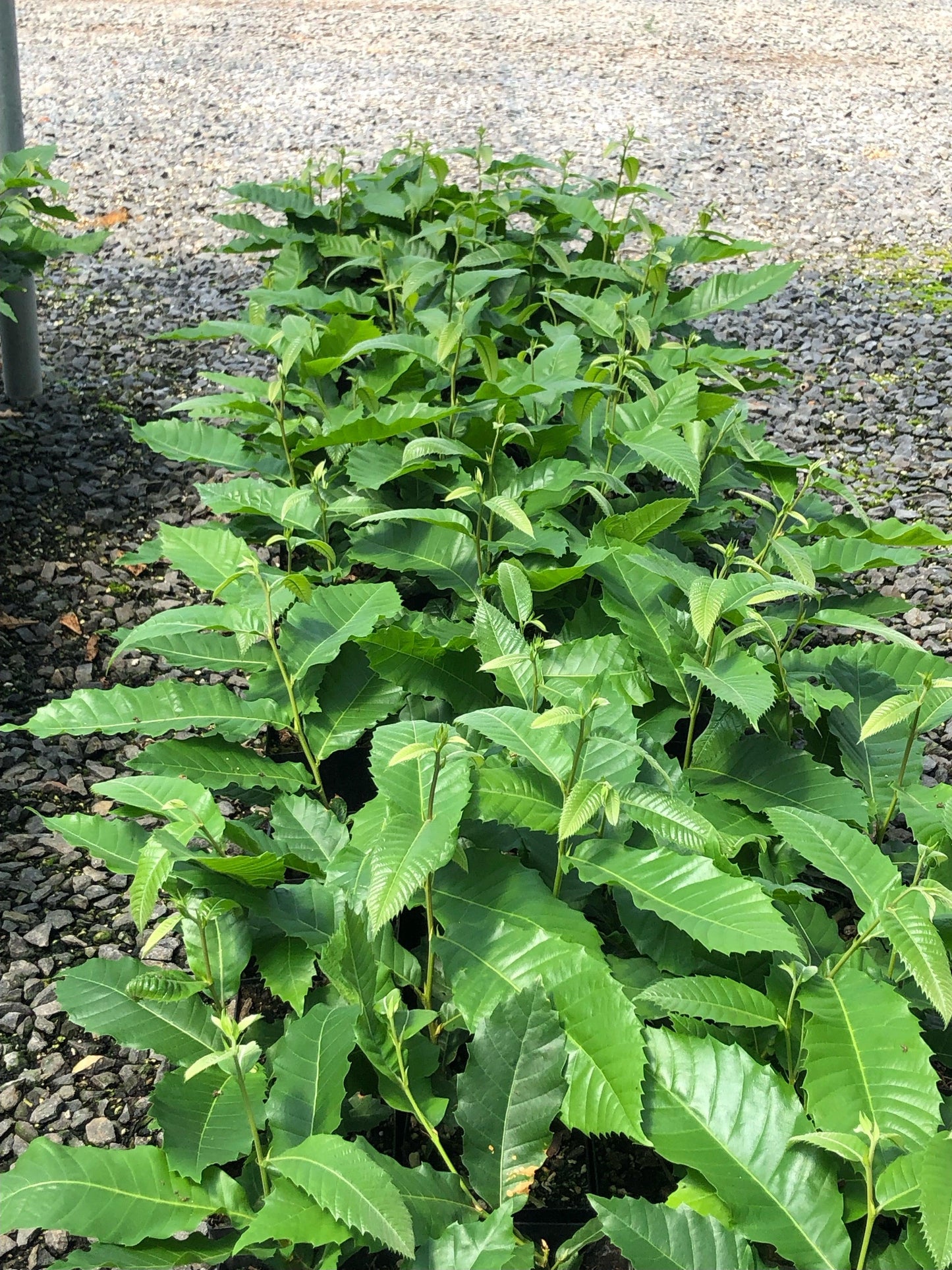
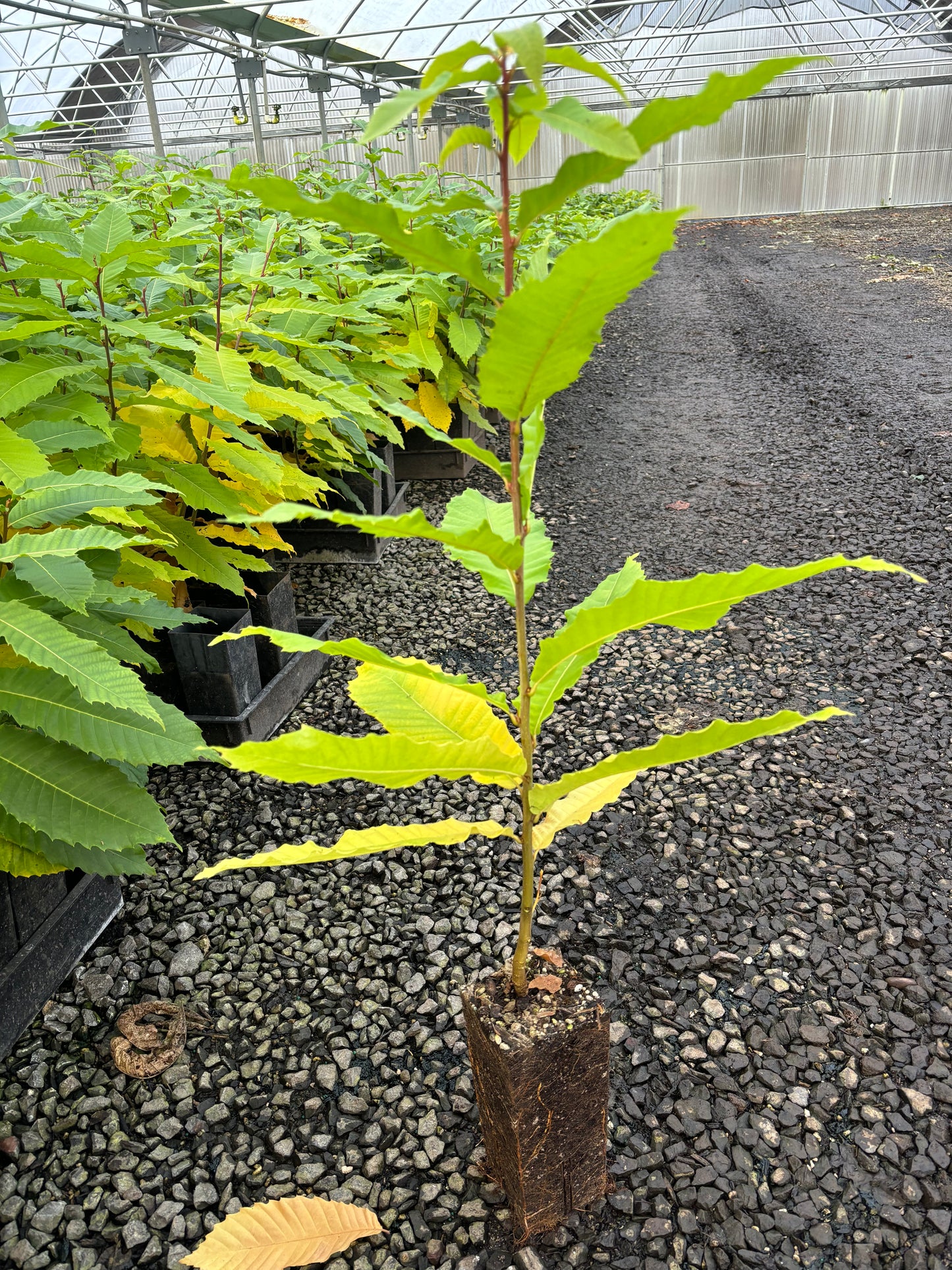
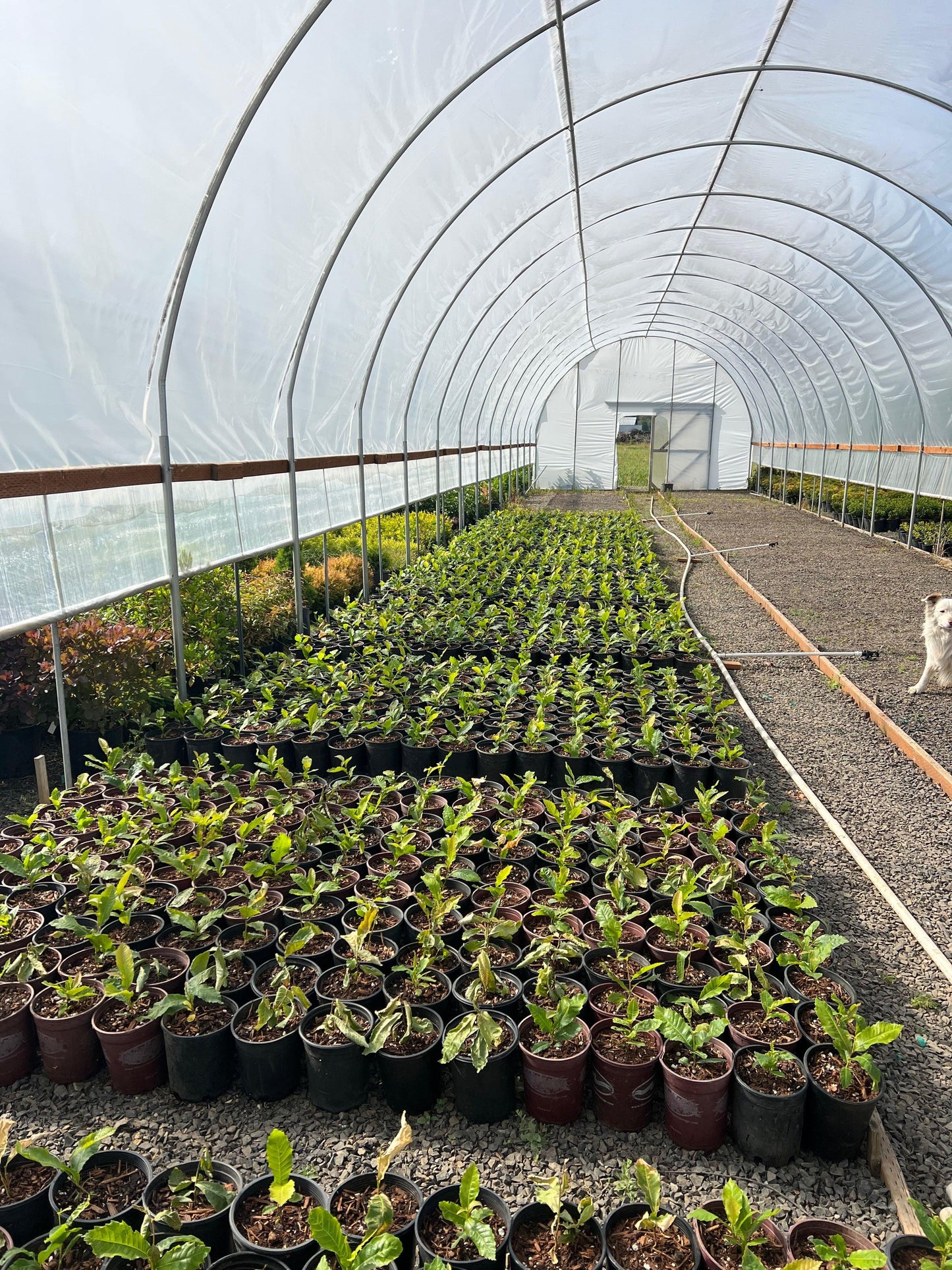
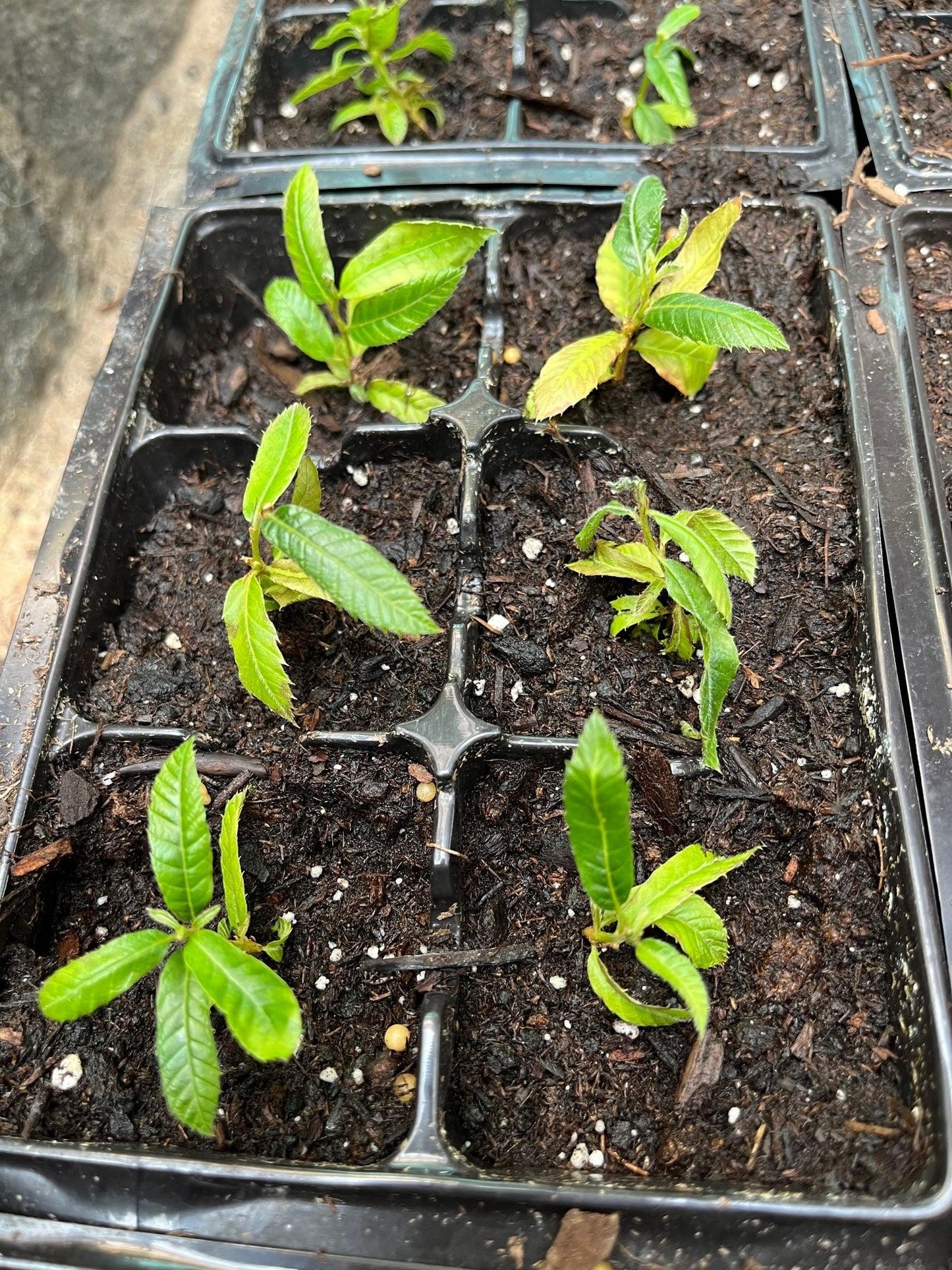
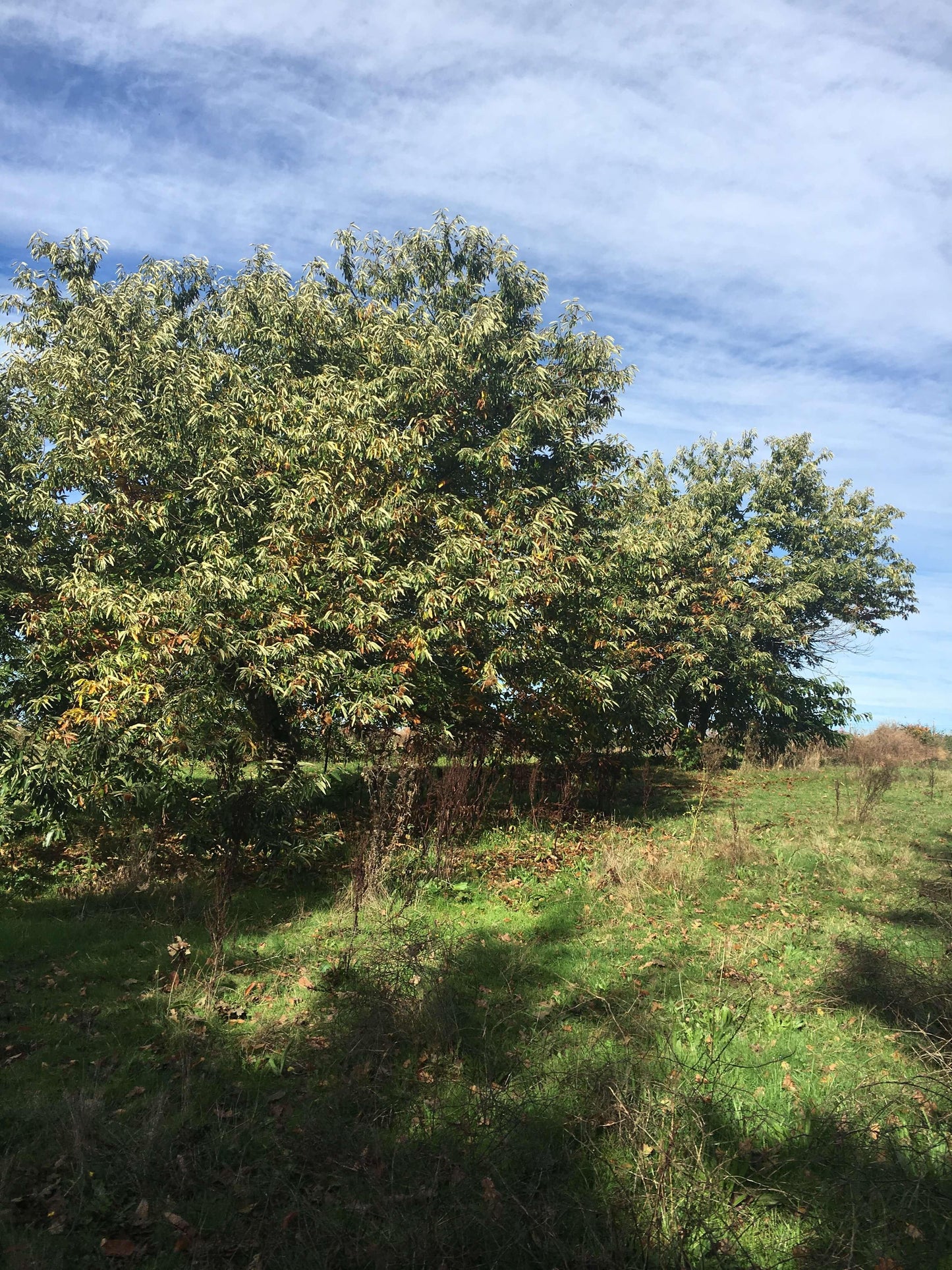
-
Free Shipping
That's it. The shipping is free.





